Cinema has the power to take us to exciting new places, both real and imagined. Through the portal of science fiction, we can be transported to incredible, even impossible new worlds. We’re not just talking about alien planets and moons, but artificial satellites, other dimensions, dark futures, and virtual realities. They can excite the imagination, but more importantly, they can help us to recontextualize our own world and our place in it.
A great setting is a reflection of its story’s themes, and that’s never more true than in science fiction. These are some of the most fascinating worlds that sci-fi cinema has allowed us to visit — though, in most cases, you wouldn’t want to live there.
10. Jupiter (Jupiter Ascending)
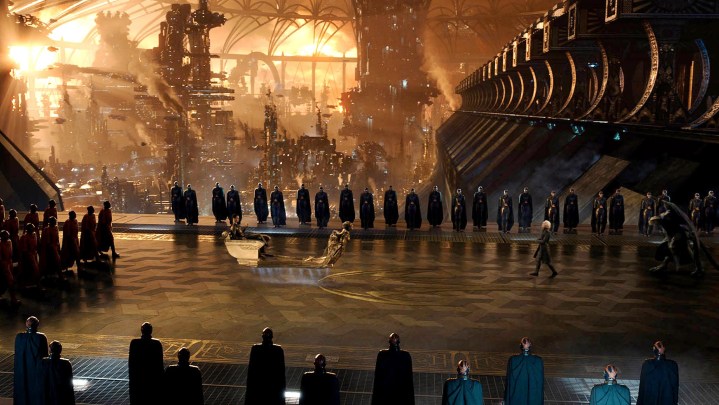
You won’t find a ton of praise for the Wachowski sisters’ other big-budget sci-fi adventure, Jupiter Ascending. Channing Tatum’s goofy space rollerblades notwithstanding, it’s got some terrific production design, including four distinct alien planets. Well, technically three alien planets, since one of them is actually pretty local — the fifth planet in our solar system and namesake of the film’s protagonist, Jupiter.
In Jupiter Ascending, working-class gal Jupiter Jones learns that the planet Earth is actually a farm for growing human beings, who are then processed into life-restoring nectar to make paying customers effectively immortal. Hidden beneath the Great Red Spot of Jupiter is a massive processing plant, essentially an abattoir where Earth’s entire human population is scheduled to be slaughtered and liquified. And given that the Red Spot is a massive, perpetually raging storm, the environment inside is indistinguishable from Hell. The film’s final battle even sees part-canine soldier Caine Wise dragged into the sky by a monster with bat wings, doubling down on the demonic imagery.
9. Alpha (Valerian and the City of a Thousand Planets)

Luc Besson’s Valerian and the City of a Thousand Planets opens with a moving, wordless sequence set to David Bowie’s Space Oddity, documenting the growth of Earth’s International Space Station from a symbol of world peace to the embodiment of interstellar community. The ISS becomes the heart of a massive new space station, Alpha, to which thousands of different alien species have contributed parts. It’s as interesting visually as it is conceptually, with separate biospheres for water-breathing species, gaseous life forms, artificial intelligence, and of course humans.
The film is (perhaps, appropriately) uneven and often uncomfortable, but the setting is fabulous, and it’s not the only interesting world Valerian has to offer. We want to give an honorable mention to the planet Kirian, whose colorful inter-dimensional marketplace occupies the same physical space as a barren desert and can only be accessed with specialized equipment.
8. Yorktown Base (Star Trek Beyond)
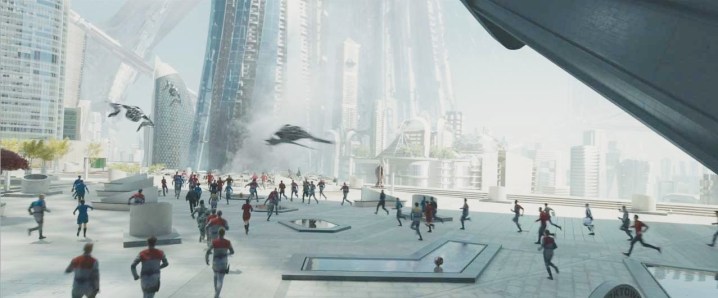
Considering that most Star Trek television series visit a new alien planet every week, it’s surprising how rarely the Star Trek feature films actually involve exploring strange new worlds or new civilizations. Trek movies are disproportionately Earth-centric, and yet still don’t manage to make its vision of 23rd or 24th-century Earth — which is home not only to a peaceful humanity but extraterrestrial immigrants from hundreds of worlds — very visually or narratively interesting.
It wasn’t until 2016’s Star Trek Beyond that the Federation’s utopia received a genuinely exciting representation, not on Earth itself, but via the colossal space station Yorktown Base. Yorktown is a manufactured spaceport and metropolis on the edge of Federation space, a shining city that the skittish Dr. McCoy describes as “a giant snow globe just waiting to crack.”
Designed without the constraints of natural gravity, its buildings extend in all directions, its skies are full of sleek shuttlecraft, and its streets are populated by members of countless different species. It is a monument to what these diverse cultures can accomplish together and a prime target for the film’s reactionary villain.
7. Ego (Guardians of the Galaxy Vol. 2)
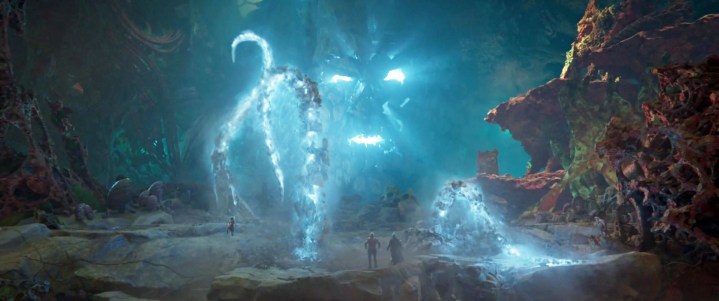
The Marvel Cinematic Universe contains a number of strange alien worlds, like the godly realm of Asgard and the broken planet Titan. The first Guardians of the Galaxy movie introduced viewers to Knowhere, a trading post built out of the rotting skull of a dead celestial being. While that’s certainly cool, it pales in comparison to the sequel’s setting, Ego. Ego is a celestial himself, a living planet with the power to reshape his own matter. The planet is visually dazzling — colorful, weird, and constantly changing — but what really makes Ego interesting is his role as the film’s antagonist.
Through his humanoid avatar (portrayed by Kurt Russell), we learn that Ego has been procreating with various alien species so that he can accumulate enough energy to reshape the entire galaxy in his own image. He’s not just a guy who’s a planet, he’s a man who thinks the world of himself and is willing to sacrifice everyone else, including his children, in the name of his own self-importance. Given that much of the film is about our heroes learning to get over themselves and consider other people, Ego is a basic example of a story’s setting representing its theme.
6. The Shimmer (Annihilation)

In Alex Garland’s film Annihilation, based on the novel by Jeff VanderMeer, a meteorite carrying an invasive life form crash lands in Florida and begins terraforming the area around it, enclosing it in an expanding electromagnetic bubble. The area, which scientists dub “the Shimmer,” deconstructs, mutates, and recombines the DNA of all life forms inside of it. Annihilation chronicles the journey of a science team into the heart of the Shimmer, looking for answers and a way to stop its spread.
Inside, they find what is effectively an alien planet, but one made from pieces of our own. Strange new plants and terrifying new animals are born, like a ferocious mutant bear that can mimic the screams of its human prey. Most chilling of all is the possibility that the Shimmer itself may have a mind and a will of its own, and a desire to assimilate or destroy everything we know. When it comes to settings as villains in themselves, they don’t get any creepier than the Shimmer.
5. Coruscant (Star Wars)
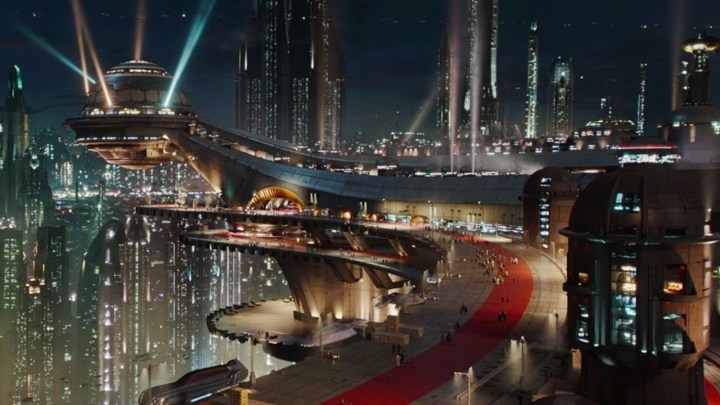
From the arid sands of Tatooine to the endless ocean of Kamino to the frozen tundra of Hoth, the Star Wars galaxy is absolutely teeming with interesting worlds and cultures. However, as much as we might like to visit Naboo’s idyllic city of Theed or make red salt angels on Crait, Coruscant is where the real action is. The capital city of the Galactic Republic (and later, the Empire) covers the entire surface of the planet and extends up hundreds of stories. Its upper levels house the wealthy and powerful, as well as the seat of government, while the mean streets of the lower levels breed both gangsters and freedom fighters. The Star Wars prequel trilogy barely scratches the surface of life in the capital, but spin-off novels, comics, and TV series dive into much greater detail, showing it to be a microcosm of the entire Republic.
Though we’re giving this slot on our list to Coruscant, we would be remiss if we didn’t acknowledge the future Los Angeles of Ridley Scott’s Blade Runner, whose aesthetic clearly had tremendous influence over Coruscant’s depiction in the prequel Star Wars: Episode II – Attack of the Clones and subsequent appearances. Blade Runner’s LA is just one of several futuristic Earth settings that were considered for this list (along with Akira’s Neo Tokyo and Alita: Battle Angel’s Iron City) that were disqualified in favor of worlds that were more literally alien.
4. Krypton (Superman: The Movie and Man of Steel)

Arguably the most important alien planet in all of superhero comics, Superman’s birthplace of Krypton has been depicted on the big screen twice, with directors Richard Donner and Zack Snyder presiding over dramatically different interpretations. The Krypton of 1978’s Superman: The Movie is an icy, white world where the population lives in domed cities and in the crevices of glaciers and canyons, and where technology is grown in crystal form.
Its counterpart from 2013’s Man of Steel is more geographically Earthlike, but still alien in the ways that matter, with bizarre fashion, impossible architecture, and giant flying reptiles who are capable of carrying a mounted humanoid. Though aesthetically quite different, the two doomed planets share a certain off-putting sterility. Kal-El is born on a planet that is, socially if not environmentally, lacking in warmth. The quality of open-heartedness and compassion, the thing that really makes him Superman, is the part he gets from us.
3. The Wasteland (Mad Max)
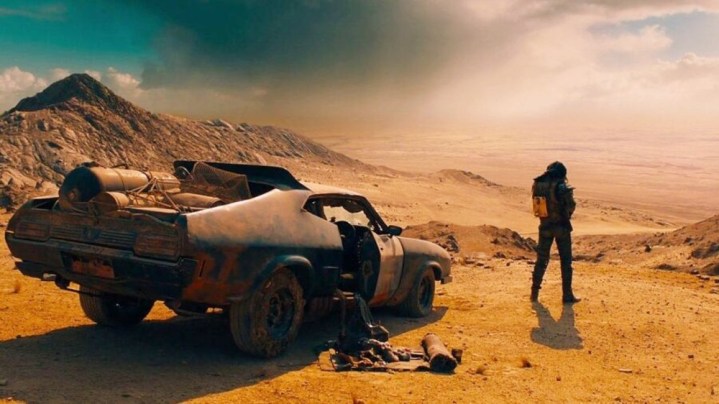
Sometime in our future (we don’t know exactly when), our governments and our biosphere will totally collapse, transforming our world into a desolate wasteland ruled by gangs and warlords. But enough about climate change, let’s talk about Mad Max, the film cycle helmed by Australian director George Miller. Here, society has broken down, and the most cruel and savage amongst us have seized control of the remaining resources. The specifics of life in the Wasteland aren’t entirely plausible, but they create the perfect environment for high-octane automotive mayhem laced with surprisingly rich themes of social justice and environmentalism.
Miller’s masterpiece Mad Max: Fury Road is one of the greatest action films of all time, and its story and its setting are totally inseparable. It’s a world where the essentials — water, gasoline, metals, human beings — are running out, and what’s left is being squandered or abused by those in power. It is also, undeniably, extremely rad. The remnants of humanity travel the wasteland in suped-up hot rods, motorcycles, and trucks hauling massive amplifiers and a shredding guitar player suspended on bungee cords. Major landmarks include Gas Town and the Bullet Farm. It’s a terrible place to live and an incredible place to look at.
2. Pandora (Avatar)
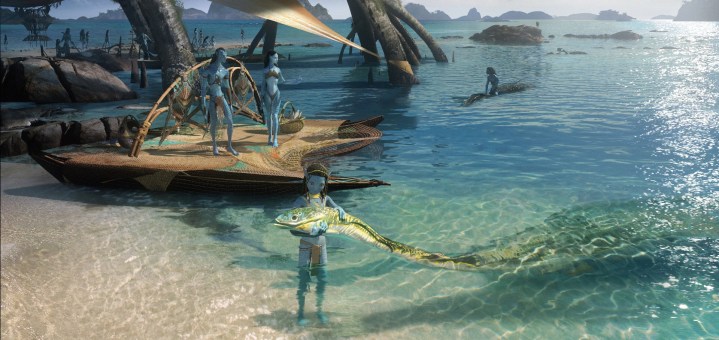
A moon in the nearby Alpha Centauri system, Pandora is the setting of James Cameron’s massively bankable Avatar films, and home to the peaceful but not-to-be-trifled-with Na’vi people. Pandora is a lush and beautiful world populated by an incredible variety of flora and fauna, but what makes the moon particularly fascinating is the way it directly interfaces with all the life forms that reside upon it.
The inhabitants of Pandora are capable of connecting their nervous systems, both to each other and to the moon itself. Pandora (or, more properly referred to by its Na’vi name, Eywa) has a soul, a mind, a memory. Pandora serves as a metaphorical embodiment of the symbiotic relationship between us and our own planet, one which humans often ignore in our own pursuit of wealth or power. When we see Pandora threatened by human industrial interests, we root for the Na’vi to protect it, but it’s really us in the audience who have to save it.
1. The Matrix (The Matrix)
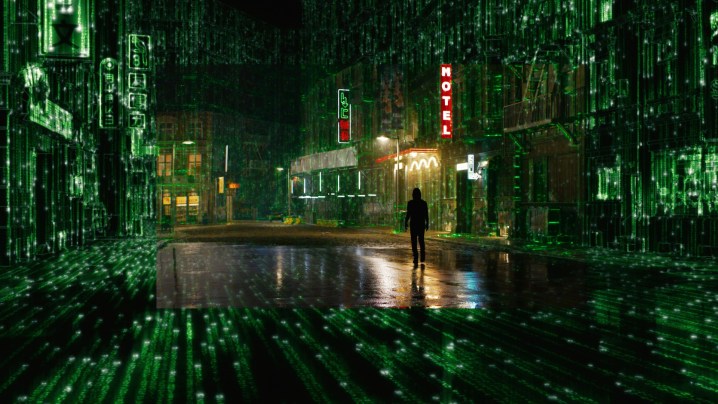
Unfortunately, no one can be told what the Matrix is; you have to see it for yourself.
We’re kidding, of course. The Matrix is a totally convincing simulation of city life at the turn of the 21st century, where people are born, slave away at unfulfilling jobs for decades, and eventually die without ever knowing that their actual bodies are submerged in a pod full of goo. The trick is, the Matrix only resembles our world until the moment you know it’s not real. Once you become aware that your environment has been designed to exploit you, it becomes impossible not to see it for the cage it really is.
There has never been a more effective metaphor for the social and economic restraints of our everyday lives, rules that we take for granted as “natural” when they are, in fact, constructs built and maintained by those in power. In the Matrix, unplugging your mind from the system’s control can turn you into a superhuman warrior against the machines. In the real world, waking up to the invisible programming around you might not let you defy gravity, but it can help set you free.



